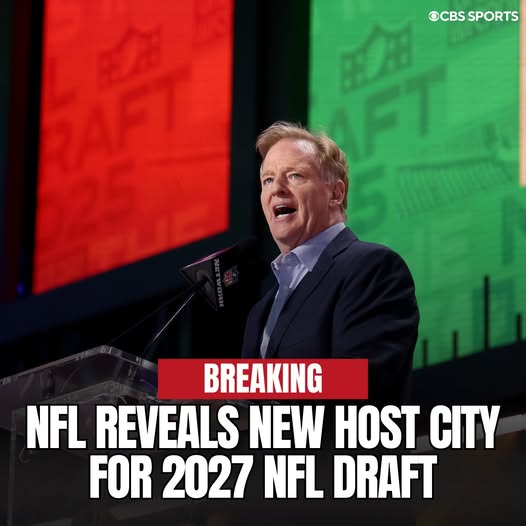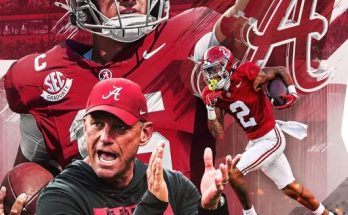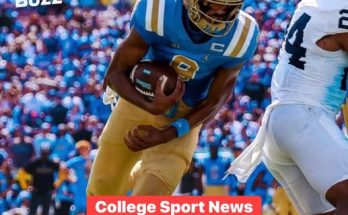For the first time in 86 years, the National Football League Draft is returning to a city that hasn’t seen it since before the Super Bowl era was even imagined. In a historic decision that has stirred excitement, nostalgia, and a fair bit of pride among residents and football fans alike, the NFL has announced that the 2026 Draft will be held in none other than Green Bay, Wisconsin—home of the Packers, the “Frozen Tundra,” and one of the most storied franchises in all of sports.
To understand why this announcement has sparked such a passionate response, one must first appreciate the significance of the location. Green Bay is not just another NFL city. It is the NFL city, often considered the beating heart of professional football’s earliest years. Despite being the smallest market in the league by a massive margin, it has remained a powerhouse thanks to its unique community ownership model and fiercely loyal fan base. The Packers are more than a football team in Green Bay—they are a cultural cornerstone, a source of regional identity, and for many, a way of life.
Hosting the draft is more than ceremonial. It is an economic, cultural, and emotional event that will reverberate far beyond the scope of the league itself. For years, the draft was held almost exclusively in New York City, in the grand halls of Radio City Music Hall. But beginning in 2015, the NFL took the bold step of rotating the event across different cities to better engage fans nationwide. Chicago, Philadelphia, Dallas, Nashville, Las Vegas, Cleveland, Kansas City, and Detroit have all had their turn. Now, it’s Green Bay’s moment to shine—a moment that has been nearly a century in the making.
Back in 1939, when Green Bay last hosted the NFL Draft, the league was a much humbler entity. There were only ten teams. The draft consisted of 22 rounds. There was no combine, no primetime television, no millions of fans tuning in to see which 20-year-old phenom would become the next face of a franchise. It was a relatively quiet affair held in a hotel conference room, attended mostly by team executives and a few curious journalists. But from those modest roots, the draft grew into one of the biggest sporting events of the year—second only, perhaps, to the Super Bowl in terms of media attention and national interest.
Today, the NFL Draft is a spectacle that spans three days, features red carpet arrivals, fan festivals, concerts, and extensive broadcast coverage across multiple networks. It draws hundreds of thousands of in-person attendees and millions of online viewers. It has become a celebration not just of football talent, but of football culture. And now, that celebration is coming to Titletown USA.
Green Bay’s selection as the 2026 host site is part of a broader recognition by the league of the deep roots and loyal fan bases that have sustained its growth. Mark Murphy, President and CEO of the Green Bay Packers, was instrumental in making the pitch to the NFL, emphasizing the city’s unique blend of history, charm, and passion for the game. Lambeau Field, the hallowed ground where the Packers have made legends and lifted trophies, will serve as a central hub for the festivities. Surrounding it, the Titletown District—a newly developed area full of restaurants, entertainment venues, and interactive fan experiences—will help transform the event into a full-on football carnival.
There is also a strong sense of poetic justice in the NFL bringing the draft back to Green Bay. This is the city that helped birth the league into what it is today. From Curly Lambeau to Vince Lombardi, from Bart Starr to Brett Favre to Aaron Rodgers, Green Bay has given football some of its most iconic names and moments. Hosting the draft here is a tribute to that legacy. It’s also a testament to the idea that even in a modern, high-tech, billion-dollar league, the roots still matter. Tradition still matters. The fans still matter.
The economic impact of hosting the NFL Draft is significant, particularly for a smaller market like Green Bay. Past host cities have reported revenue injections ranging from $75 million to over $150 million, thanks to increased tourism, hotel bookings, restaurant visits, and merchandise sales. With Green Bay’s close proximity to larger cities like Milwaukee, Madison, and even Chicago, the event is expected to draw fans from across the Midwest and beyond. Local businesses are already preparing for the influx. Hotels are booking out months in advance, restaurants are working on special menus, and the city is bracing for one of the largest and most exciting weeks in its recent history.
More than money, though, what the draft brings to Green Bay is validation. Validation that the heart and soul of football doesn’t lie in the skyscrapers of New York or the glitz of Las Vegas but in the everyday communities that live and breathe the sport 365 days a year. In cities like Green Bay, where children grow up throwing snow-covered spirals in their backyard, where families plan holidays around the Packers’ schedule, and where the sight of a cheesehead in church is not only acceptable but celebrated.
The upcoming draft also presents an opportunity for Green Bay to showcase itself to a national and even international audience. With NFL expansion of interest in Europe, Mexico, and Asia, the draft serves as a promotional tool not only for the league but for the host city. Green Bay will be on full display—its traditions, its hospitality, its deep roots in football lore. Expect the storylines to run thick: Vince Lombardi’s shadow looming large, tales of the Ice Bowl, footage of Packers greats flashing on screens as rookies shake hands with NFL Commissioner Roger Goodell.
And what of the fans? The Packers faithful are often described as the most loyal in the league, with a waiting list for season tickets that spans decades. These fans show up in sub-zero temperatures, paint their faces green and gold, and own a stake in the only publicly owned franchise in American professional sports. For them, hosting the draft is not just about welcoming the next generation of players. It’s about reaffirming their place in the NFL landscape. About reminding the world that while markets and media change, football remains a deeply personal experience in Green Bay.
Of course, the logistics of hosting such a major event in a small city are not without challenges. Infrastructure, transportation, accommodations, and public safety are all areas of intense focus. But local officials, the Packers organization, and the NFL are already working closely to ensure that the event runs smoothly. With the Titletown District acting as a modern anchor and Lambeau Field as a historic centerpiece, there’s confidence that Green Bay will more than rise to the occasion.
Looking ahead, the 2026 NFL Draft promises to be a blend of old and new—a celebration of football’s future set against the backdrop of its most revered past. It will be a moment for young players to realize their dreams, for fans to make lifelong memories, and for a city to remind the world why it has earned its place on the NFL’s Mount Rushmore.
Eighty-six years is a long time to wait. But for Green Bay, the wait has only sweetened the moment. In 2026, the draft won’t just be an event. It will be a homecoming. A chance to honor where football has been—and where it’s going next.



